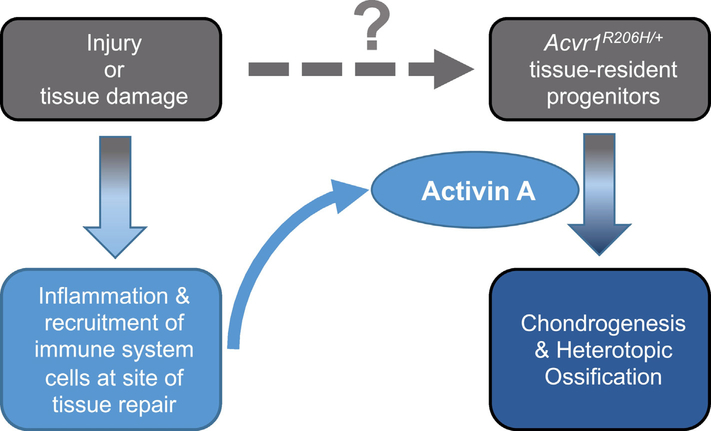Fig. 4.
A working model for the formation of heterotopic bone in FOP. Tissue damage to skeletal muscles, ligaments, and tendons as a result of injury or regular use results in the recruitment of immune system cells into the area in need of repair. In addition, tissue damage provides a yet-to-be-identified signal that enables tissue-resident progenitor cells to become competent to give rise to the chondrocytes that form the initial cartilage anlagen that will give rise to the heterotopic bone. Activin A, secreted by the immune system cells at the site of tissue damage, is perceived as a pro-osteogenic signal by the tissue-resident progenitor cells. (Alternatively, the immune system cells may instruct other cells in the area of the future heterotopic bone lesion to express Activin A.) These progenitor cells, in response to Activin A, differentiate into chondrocytes and proceed to form heterotopic bone lesions.

